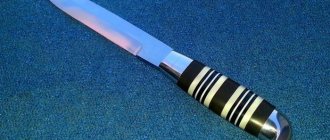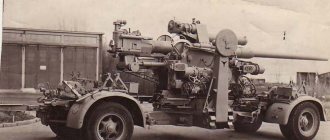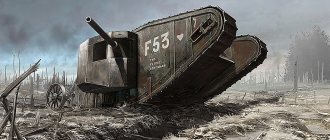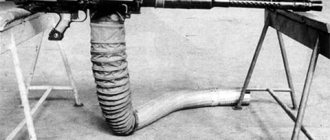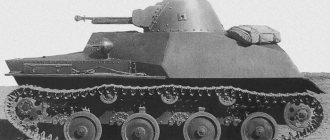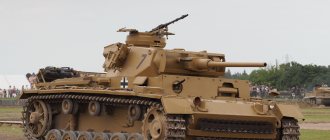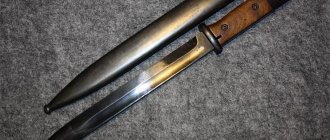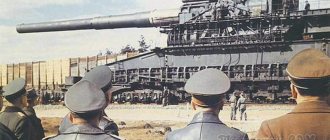A bayonet is a cold bladed weapon that is attached to a hand-held long-barreled firearm and is intended for use in hand-to-hand combat against an enemy. Bayonets have the same damaging qualities that are characteristic of piercing and piercing-cutting weapons.
Based on history, at the end of the 50s, development work was carried out by military specialists, during which they made a very important conclusion and stated that the bayonet knife is still a symbol of will and the desire for victory, so it must be with a Kalashnikov assault rifle. Accordingly, Soviet soldiers had to master hand-to-hand combat using a bayonet and butt, and must undergo physical, technical and psychological training in order to skillfully behave and be prepared for such a fight.
First products
Each state entered the Second World War with its own set of weapons. The troops of the USSR and Germany turned out to be the most prepared in this regard, since at that time military operations continued for them.
With the beginning of the war, the need to adapt the knife to the conditions of field battles, battles within the city, and reconnaissance work became obvious. For example, in Germany they modified bayonet knives, hunting daggers and even cutlasses.
A trench knife is a military weapon designed to kill or seriously incapacitate an enemy soldier at close range, as may be found along a trench line or other confined area.
It was developed in response to the need for close combat weapons for soldiers conducting attacks and raids on enemy trenches during the First World War. An example of a WWI trench knife is the German army Nahkampfmesser (close combat knife).
With the outbreak of World War II, the trench knife, by this time commonly called the combat knife, proved so useful that armies continued to develop and produce new designs. On the Axis side, the Nahkampfmesser and the projects developed from it produced both combat and general-purpose service knives for ordinary soldiers.
Allied armies generally limited the issue of trench knives to elite infantry units and infantry not equipped with a bayonet.
Basic properties of bayonet knives
The functionality of the bayonet knife is clear and understandable; in short, versatility is its priority. But its properties are clear:
- can be quickly unfastened for hand-to-hand combat;
- the weight of the product itself plays a big role;
- do not interfere with the fighter when carrying him unfastened;
- length is also important in hand-to-hand combat;
- the hardness of the steel is sufficient to use it as a tool;
- multifunctionality.
These properties must be inherent in every bayonet. Finding himself in any situation, a fighter should not fiddle with the blade for long. All actions performed must be easy and simple. Every bayonet knife should have such properties.
Famous models
Famous models of the Second World War belong to Russian, German, American, and British production. Each state developed its own “national” version of edged weapons.
The NR-40 ("scout knife") was a Soviet combat knife introduced in 1940 and used throughout World War II. The HP-40 has a 152mm blade with a clamp point, black wooden handle and S-shaped guard. The guard is "inverted" (unlike most S-shaped guards, it curves towards the edge). This made it possible to work with a knife using a reverse grip.
Scout knife HP-40.
At the beginning of the 20th century, Finnish puukko knives began to become popular among criminals in most cities of the Russian Empire. Local knife makers then began modifying the Finnish forester's tool to make it more useful for fighting; for example, making the blade longer, changing from a flat back to a pinch point, and adding more protection.
The resulting weapon, still called the "Finnish knife" or "finka" in Russian, looked somewhat different than the typical puukko.
Finnish knives were ubiquitous in the criminal world of Russia and the Soviet Union throughout the first half of the 20th century. Because of the criminal community, the Finnish knife was banned in the Soviet Union in the 1930s, just as the switchblade would later be banned in the West.
The Winter War revealed a number of shortcomings in Soviet weapons; Among other things, the Soviet infantry lacked a good combat knife.
As a result, in 1940, the Soviet army adopted the HP-40, essentially a serial version of the Russian bandit "Finnish".
In the USA, the famous model was the Ka-Bar blade. This is the trademarked, modern popular name for a combat knife first adopted by the United States Marine Corps in November 1942 as the 1219c2 combat knife (later designated the USMC Mark 2 combat knife or combat utility knife), and later adopted by the United States Navy in as a US Navy Mark 2 utility knife.
Additionally, Ka-Bar is the name of the related knife manufacturing company Ka-Bar Knives., Inc. (formerly Union Cutlery Co., New York, subsidiary). Although Ka-Bar Knives, Inc. currently produces a wide range of knives and cutlery, it is best known for the Ka-Bar Fighting/Utility knife, which traditionally used 7-inch (17.8 cm) 1095 carbon steel with a clip and leather handle.
World War II is known for the proliferation of bayonet knives. Designed in 1942 by Wilhelm Gustloff Werke in Suhl and manufactured by Karl Eichhorn in Solingen, the "SG42" was intended to complement and replace the original Karabiner 98 bayonet. Although this was largely proven, there was a shortage of business and utility knives, which were usually purchased privately . The "SG42" was designed as a combat knife, but could also be mounted as a bayonet.
After consistently positive reception of several hundred pieces, the troops gave it a shot in 1943, production was approved by Adolf Hitler, but this had to happen due to the cost of converting production before the end of the war. In 1944, the Army Ordnance Bureau issued an order for 10,000 units, production began, but due to the end of the war only a small number were delivered.
And in the Russian Federation
The modern Russian model 6X5, adopted in 1989, was also painted black. It has become much lighter, but still cannot boast of outstanding cutting qualities. However, is this really what a modern bayonet needs? Cheap, technologically advanced; If necessary, you can use it to open a tin can.
And in general, it looks good on the machine.
In general, they do not seek good from good. Probably, an ideal bayonet does not exist in nature at all.
And is it even needed today?
Knives of the Third Reich
Cold steel weapons of the Third Reich are represented by a large number of models, the meaning of which was largely symbolic. This is a large number of officer daggers (“Heer”, Luftwaffe officer, Kriegsmarine officer), daggers of soldiers of the SA, Feldherrnhalle, Schutzstaffel detachments, daggers of cadets, labor cleavers (cleaver of the command staff of the German Labor Front RAD, cleaver of the rank and file of the German Red Cross DRK), etc. .
In other words, bladed weapons (and other weapons) were a sign of the social group to which the owner belonged. Usually these were dagger or spear-type blades with a pronounced guard.
Knife of the Third Reich.
The handle and blade could be densely decorated with appropriate symbols: eagles, runes, slogans in Gothic font, etc.
Wehrmacht knives
Wartime required the improvement of edged weapons and the adaptation of their properties to battle conditions. The Wehrmacht's task was to constantly experiment with knives. In particular, the 1884 model, created for close combat, was in service.
The modification of the handle, the material of its manufacture changed, and parts were added for additional functions of the blade. A notable feature of that time was the use of bakelite cheeks in the handle . These elements were fastened with several screws. The blade was 25 cm long. It was sharpened on one side, and the fullers were located on both sides: this solution increased the strength of the product.
Wehrmacht trench knife.
Russian bayonet in the 20th century
Russian bayonet thought - like the sympathies of the Russian Empire - throughout the 19th century tossed between the French and the Germans. On the one hand, the French style of “putting it in, taking it out and running” looked very nice, so the domestic bayonets for the Berdan and Krnka rifles were made tetrahedral.
Bayonet for Berdan rifle No. 2
On the other hand, solid Teutonic pieces of iron, in addition to “spinning”, were suitable for various household tasks: splitting a splinter, slaughtering a pig, slicing a snack... But this multitasking led the domestic generals to some embarrassment. Knowing the kindness of the Russian peasant, the command legitimately feared that the soldiers would certainly rip through the knives that were useful in the household.
M1884/98 III bayonet for Mauser K98 carbine
“They’ll be stubborn, bastards,” lamented the gray-haired generals and colonels, moving their sideburns over their glasses of sherry, “they’ll certainly be stubborn, sir!”
However, time was running out, and the Mosin rifle that had been put into service without a pommel looked simply indecent. Terrible visions of the devastated treasury and peasant demobilization, dragging bundles of brand new practical bayonets into their huts, forced the military authorities to despise caring for the soldier’s life and adopt the well-known needle-shaped “tetrahedron”. It was not suitable for anything other than perforating the adversary, but that is exactly what it did very well.
Mosin rifle and bayonet
The indignant rank and file were told not to cry, but to take away practical knives from the enemy. The Germans, for example.
Knives SS
The name of the detachment Schutzstaffel means "security squads". The SS was an elite unit, the youngest fighter was at least 21 years old, all of them were extremely carefully physically, intellectually and ideologically prepared. The SS unit joined the ranks of the personal guards of charismatic rulers in world history, whose reputation was based on hatred for cruelty and a mystical horror of the power of the “SS”.
The equipment of the SS soldiers also corresponded to their special status. In addition to the famous SS daggers, which will be discussed below, the detachment was also armed with folding knives. For example, “Pantographic”, which has an unusual design solution. It could be opened and closed manually. At the same time, the mechanism was as reliable as if the blade was fixed. The knife was released in 1937.
Combat dagger-knife CC.
The SS dagger, as a phenomenon in the world of edged weapons, has undergone many editions, which differed from each other in symbolic details such as the inscription on the blade or the use of lower quality metal for the sheath.
This elite attribute is created on the basis of a Swiss hunting dagger, literally “copied” from a 16th-century portrait by Hans Holbein.
Basic parameters of the SS dagger
The dagger of the Schutzstaffel (SS) members was introduced by order No. 1734/33 on December 15, 1933, signed by the interim SA Chief of Staff Obergruppenführer von Krausser. It was a tetrahedral dagger with no fullers, and along the blade the inscription “Meine Ehreheisst Treue” (“My honor is called loyalty”).
The thickly varnished black wooden handle depicts an eagle with a swastika in its talons. Near the pommel there are two zig runes enclosed in a ring. The handle initially had cupronickel metal elements, then nickel-plated zinc and aluminum.
A metal pendant was attached to the handle, replete with Celtic symbols: runes, clover leaves, images of a skull and crossbones, etc. Blade length – 37 cm.
Blade parameters
- length in sheath: 360 – 375 mm;
- length without sheath: 345 – 350 mm;
- double-edged blade;
- length: 220 – 230 mm;
- width: 34 – 35 mm;
- thickness at the heel: 5.5 mm.
Handle
- length of wooden part: 110 mm;
- width: 35 mm;
- thickness: 21 mm.
From club to knife
Until the mid-19th century, the rate of fire of guns left much to be desired: a couple of seconds after the command “Fire!”
an expensive, complex mechanism simply turned into a heavy, inconvenient cudgel. Accordingly, as soon as handguns appeared in the regular armies of the world, the military stubbornly began to try by any means to increase their effectiveness. This is how bayonets appeared.
Evgeniy Bashin-Razumovsky Expert on historical issues
Initially, soldiers with pikes and halberds protected the shooters during reloading. But it turned out inconveniently - one part of the fighters was useless in a firefight, the other - in hand-to-hand combat. Then they came up with a baguinet - a dagger that was inserted with the handle into the barrel of a gun. It turned out to be an improvised spear. And then the bayonet appeared - it was attached next to the muzzle, so it did not interfere with shooting and reloading.
Now, after firing an unloaded weapon, one could simply stab the enemy. And the longer the weapon with a bayonet, the greater the damage from a distance. For example, the length of the famous British musket of the 1722 model “Brown Bess” (“Dark Bess”) was almost 160 centimeters, and the length of the bayonet blade for it was another 44 centimeters.
The first model "Brown Bess" with a bayonet
Over time, infantry rifles became shorter, but the military stubbornly clung to the idea of “stabbing from afar.” For a long time, the French used blades at least half a meter long: these were the bayonets for Chassepot and Lebel rifles.
Scimitar bayonet for the Chassepot rifle of 1866, blade length - 578 mm
Armies made bayonet attacks less and less often: by the beginning of the 20th century, warriors came to their senses somewhat and even tried to give bayonets additional useful functions. But in Russia time has slowed down somewhat.
Brand on the weapon
During the Third Reich, about a hundred companies were engaged in the production of bladed weapons. This can be explained not only by wartime needs, but also by Hitler's love of steel blades.
Many of the dagger and dirk manufacturers were located in the city of Solingen, which for this reason began to bear the name “City of Swords”. The stigma was a necessity and at the same time a tradition. This sign spoke not only about the manufacturer, but also about the history of the creation of the weapon.
They usually left their brand name under the guard on the flat side of the blade using stamping.
Explanation of markings
Each mark had its own meaning, and it could be deciphered. The knives have undergone quality control. In 1934, an entire commission was created that monitored the production of edged weapons and the price level for them.
Each manufacturing company received a personal number from the Control Service, which could be included in the stamped symbol. The markings of the Eichhorn knife RZM M 7/66/43 can be deciphered as follows:
- RZM is the name of the Service - Reichszengmeistrei;
- M - use of metal in production;
- 7 - type of product - edged weapons;
- 66 is the code of the manufacturer, in this case Eichhorn;
- 1943 is the year the knife was produced.
RZM mark on the dagger.
Today, not all symbols can be deciphered. The values contained in the mark could indicate the number of fighters in the unit or be the personal serial number of the soldier. The stamps provided a lot of information about the military operations of World War II.
Edged weapons of the early twentieth century are not just an evolutionary stage in the quality of knives, it is also a massive layer of historical facts and data, the destinies of people and empires.
Varieties of sections and shapes of bayonet blades
With the development of firearms, the bayonet gradually began to fade into the background. But many competent designers argued that it was necessary, making it multifunctional. And the soldier, in fact, will be armed with two knives, and the advantage of one of them will be a tool that is needed by many military units, signalmen or intelligence officers.
It is very difficult to classify all objects. There were many options; there were even folding and triangular bayonets. But the main characteristics of shapes and sections are present in all products:
- with double-sided blade sharpening, having a T-shaped section;
- with one-sided sharpening;
- simply with double-sided sharpening;
- stiletto bayonets with needle blades.
An example of different sections and shapes of bayonet blades.
The weapon attachment system also has slight differences. Some versions had latches in the area of the crosspiece, while others had latches in the head of the handle. And there were also instances in which the latch button was located in the very cross of the blade.
I would also like to remember about SEITENGEWEHR 98
Also known as the 98k bayonet/combat knife, no matter what you call it, it is an effective combat knife as well as a tool knife. If you can get close enough to your target, it is a silent and effective killer.
Combat knife SEITENGEWEHR 98.
The Seitengewehr 98 is a close combat weapon first introduced into the German Army as a bayonet for the Mauser M1898 rifle with a 50 cm (19.7 in) blade. In 1905, the Seitengewehr 98/06 replaced the previous blade and was shortened to 37 cm (14.6 in).
In 1908, when the 98 Kurz carbine was introduced as a standard issue short-barreled rifle, they were paired and were issued until the end of World War II. It was widely used by engineering, pioneer, cavalry, artillery and special forces.
Previous
Combat knivesCombat knives of Russian special forces
Next
Combat knives A mercury knife that always sticks when thrown is a beautiful fairy tale for lazy throwers
Technologies and materials used in the production of bayonet knives
If you carefully study bayonets of different generations starting from the 16th century, you can clearly see the industrialization of the planet. For several centuries, there were practically no changes in production and the function of application was the same. And closer to the 20th century, more modern materials in the manufacture of bayonets are clearly visible.
Accordingly, steel has also become more reliable and stronger. The development of metallurgy made itself felt; many manufacturers moved from the forge to the workshops of factories. And they were no longer made by hand, but in mass flow on a conveyor belt, using stamping equipment.
The development of the polymer industry, laser equipment, metal-ceramic products, all these components also affected the production of bayonets. Which by that time had already begun to look more like knives. And, as you know, any blade also requires a sheath. Their modernization took place in parallel with the products themselves; it looked like this:
- wooden;
- leather with wooden inserts;
- leather;
- leather with metal holder;
- completely metal;
- made of polymaterials;
- plastic with metal inserts.
Modern sheath made of plastic.
And many other options can be thought of today. All these materials are freely available, create as much as you like. But just take into account modern requirements, GOSTs and TUs.
